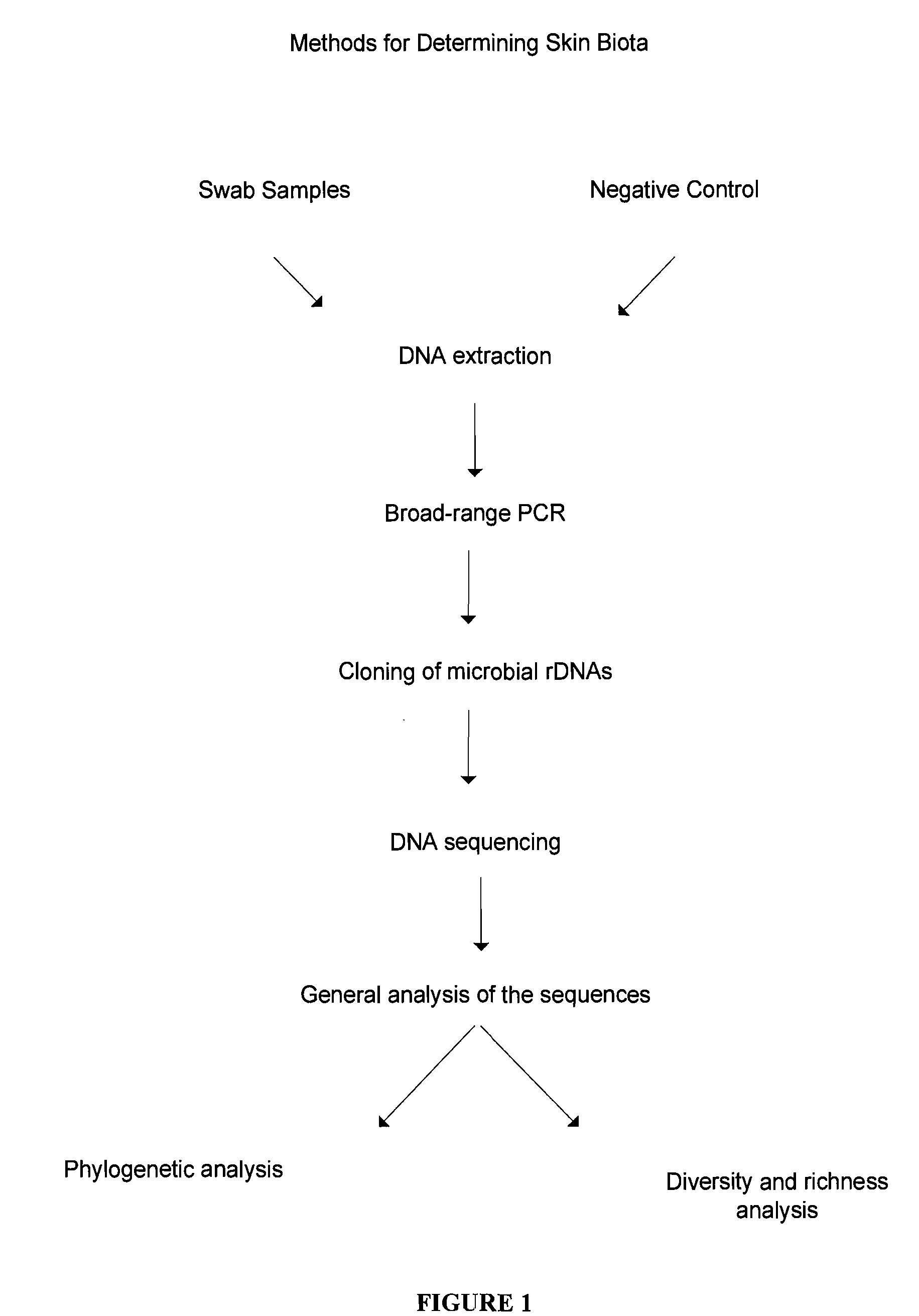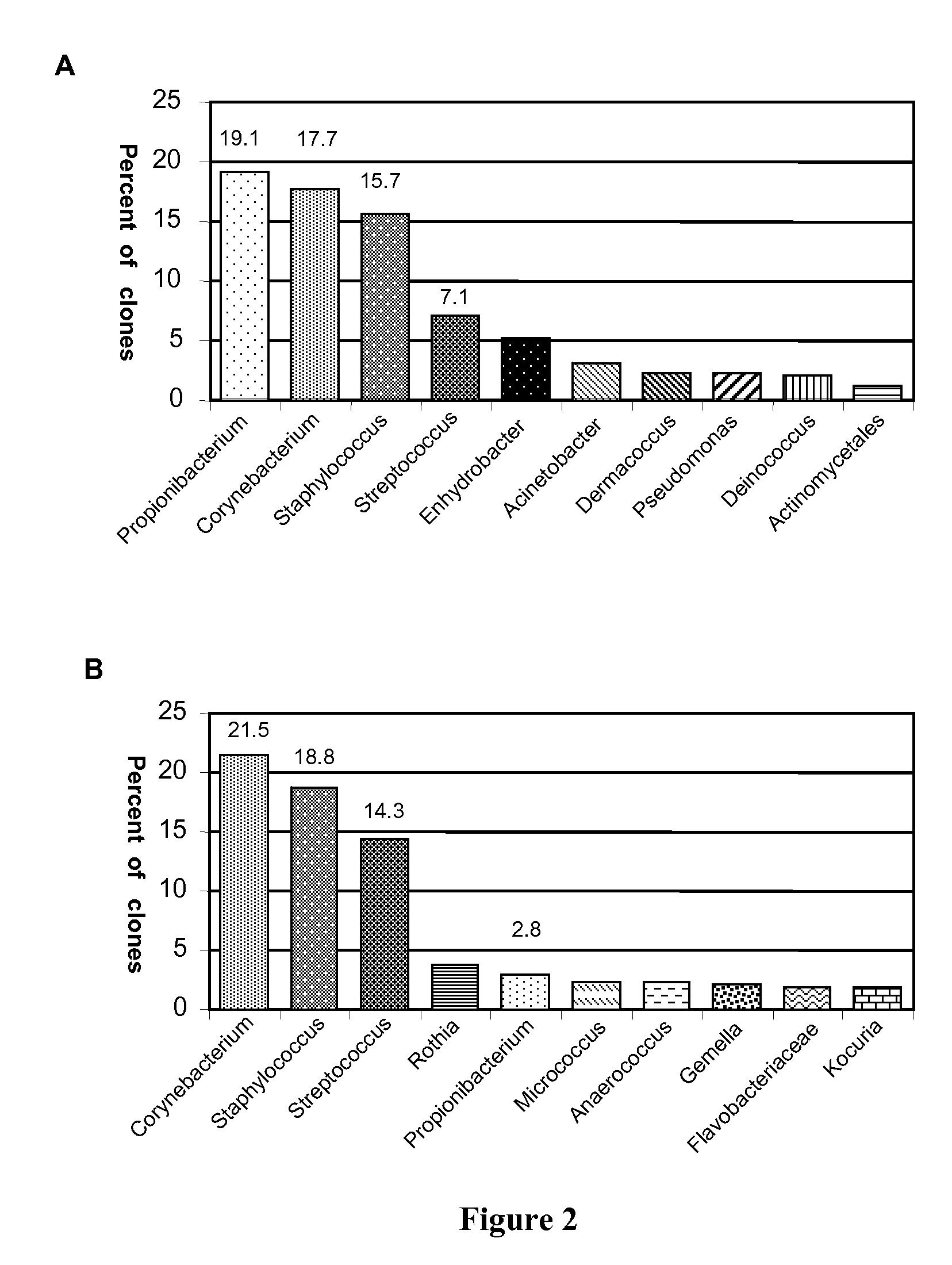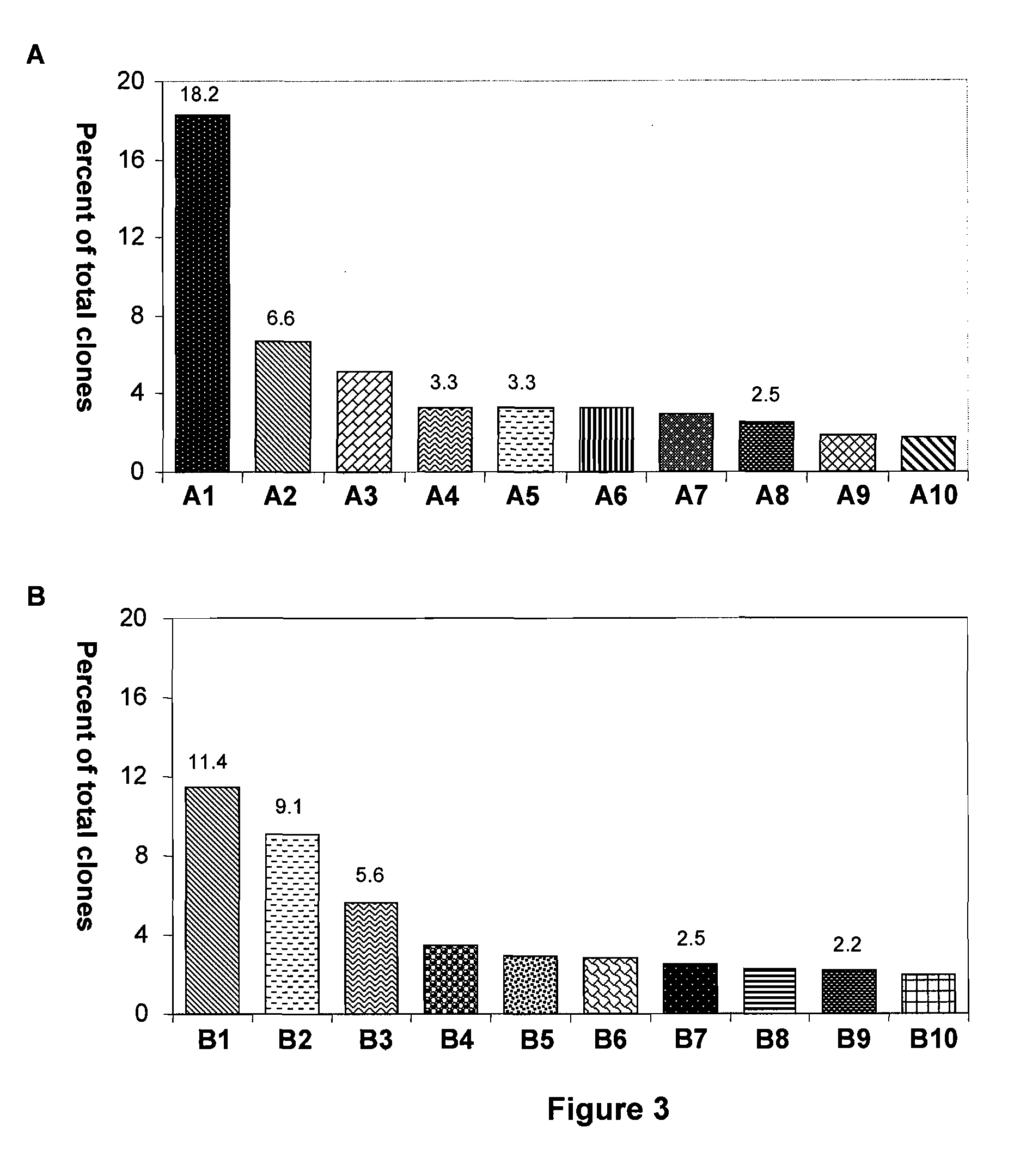Diagnostic and treatment methods for characterizing bacterial microbiota in skin conditions
a technology of skin conditions and diagnostic methods, applied in the field of diagnostic and treatment methods, can solve the problems of inability to understand the role of bacterial microbiota in psoriasis, the knowledge of human skin biota, chiefly through cultivation-based studies, etc., and achieve the effects of reducing the incidence of psoriasis, and lowering the gs/p ratio in the skin
- Summary
- Abstract
- Description
- Claims
- Application Information
AI Technical Summary
Benefits of technology
Problems solved by technology
Method used
Image
Examples
example 1
Ratio of the Genus Streptococcus to Propionibacterium
[0114]FIGS. 2A-B show samplings of the ten most common genera of bacteria found in human skin based on 16S rDNA clone analysis performed on samples as described above. FIG. 2A shows the percentages of bacteria from skin samples from healthy individuals and from normal skin of patients with psoriasis (n=2,649 clones). These results show that the skin from healthy persons and the normal skin of patients with psoriasis exhibit a gS / P ratio of 0.4. (i.e., ratio of genus Streptococcus to Propionibacterium=0.4.
[0115]FIG. 2B shows the results of skin samples from lesions of patients with psoriasis (n=1,314 clones). These results show that the skin from psoriatic lesions exhibit a gS / P ratio of 5.0 (i.e., ratio of Streptococcus to Propionibacterium=5.0).
example 2
Ratio of Streptococcus mitis to Propionibacterium acnes (sS / P)
[0116]FIG. 3 shows the percent of clones of the 10 most common bacterial species found in human skin, based on 16S rDNA clones. FIG. 3A shows the results of skin samples from healthy persons and normal skin of patients with psoriasis (n=2,649 clones). These results show that the skin from healthy persons and the normal skin of patients with psoriasis exhibit an sS / P ratio of 0.2 (i.e., ratio of the species Streptococcus mitis to Propionibacterium acnes=0.2).
[0117]FIG. 3B shows the results of skin samples from lesions of patients with psoriasis (n=1,314 clones). These results show that the skin from psoriatic lesions exhibit an sS / P ratio of 2.5 (i.e., ratio of the species Streptococcus mitis to Propionibacterium acnes=2.5). The bars in the graphs are labeled and correspond to the following bacterial species: Propionibacterium acnes (A1, B7); Corynebacterium tuberculostearicum (A2, B1); Staphylococcus hominis (A5, B2); Str...
example 3
Characterization of the Presence of 16s rDNA from Bacterial Genera Found in Skin Samples from Healthy Individuals (or Normal Skin from Psoriatic Patients) and in Skin Samples from Psoriatic Lesions from Psoriatic Patients
[0118]The presence of 16S rDNA from Propionibacterium, Streptococcus, Staphylococcus and Corynebacterium found in healthy (e.g., no obvious signs of disease or skin condition) skin samples from six individuals was determined as shown in Table 2.
TABLE 2Presence of 16S rDNA from four genera found inskin samples from six healthy individualsPercentNo. ofAny ofSamplesaclonesPropionibacteriumStreptococcusStaphylococcusCorynebacteriumthe 4AT20810.67.73.41.423.1BT20412.35.92.97.428.5CT20212.45.916.826.261.3DT20414.72.018.644.679.9ET20323.210.815.821.271.0FT20059.52.59.513.585.0AT22032.02.52.01.07.5CT220637.932.01.91.573.3ET22029.97.98.47.433.6FT220628.63.929.618.981.0Mean ± SD203.8 ± 2.321.1 ± 17.08.1 ± 8.910.9 ± 9.214.3 ± 13.954.4 ± 28.4aSamples from each participant at on...
PUM
| Property | Measurement | Unit |
|---|---|---|
| MW | aaaaa | aaaaa |
| PCR efficiency | aaaaa | aaaaa |
| PCR efficiency | aaaaa | aaaaa |
Abstract
Description
Claims
Application Information
 Login to View More
Login to View More - R&D
- Intellectual Property
- Life Sciences
- Materials
- Tech Scout
- Unparalleled Data Quality
- Higher Quality Content
- 60% Fewer Hallucinations
Browse by: Latest US Patents, China's latest patents, Technical Efficacy Thesaurus, Application Domain, Technology Topic, Popular Technical Reports.
© 2025 PatSnap. All rights reserved.Legal|Privacy policy|Modern Slavery Act Transparency Statement|Sitemap|About US| Contact US: help@patsnap.com



